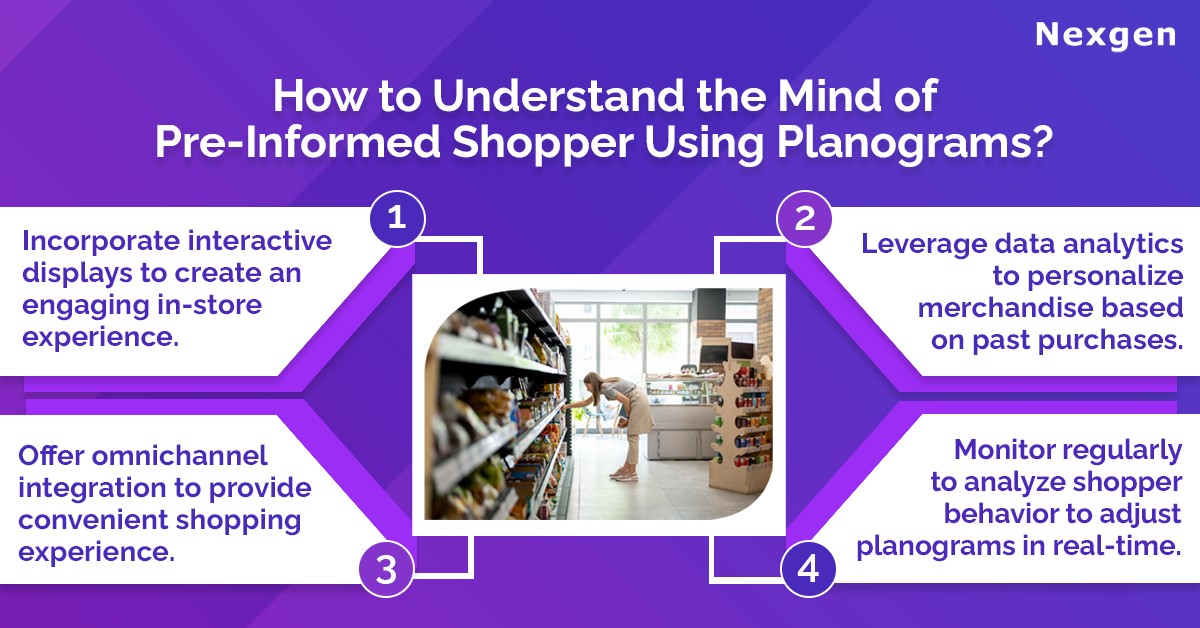Gone are the days when simply stocking shelves with products was enough to entice shoppers. Now, retailers must create an environment that not only meets the expectations of the pre-informed shopper but exceeds them. One of the most effective tools for catering to the pre-informed shopper is the planogram. A well-executed shelf space planning strategy, such as planograms can guide shoppers through the store seamlessly, enhance product visibility, and drive sales.
Understanding the Pre-Informed Shopper
Before setting foot in a store, today's consumers have done their homework. They have researched product features, compared prices, read reviews, and even sought recommendations from friends or influencers. By the time they enter the store, they already have a clear idea of what they want and how much they are willing to pay.
A well-designed planogram considers factors such as product popularity, seasonality, and shopper behavior to create an intuitive layout that maximizes sales potential. By organizing products logically and highlighting key features, retailers can streamline the shopping experience and help shoppers find what they are looking for quickly and easily. For example, grocery stores strategically place organic and locally sourced produce at eye level and near the entrance, catering to the preferences of pre-informed shoppers who prioritize health and sustainability. By prominently featuring these products, the store knows the values of its target audience and makes it easier for them to find the items they seek. In this blog, we delve into the mind of the pre-informed shopper and explore how retailers can leverage planogram services to meet their evolving needs.

1. Creating an engaging in-store experience.
Pre-informed shoppers often seek validation for their choices and expect a seamless shopping journey. Retailers can enhance the in-store experience by incorporating interactive displays, product demonstrations, and sensory elements that captivate and inform shoppers.
For example, a cosmetics store could offer makeup tutorials and skincare consultations to engage pre-informed shoppers and provide personalized recommendations.
2. Leveraging online presence for offline success.
Today's consumers conduct extensive online research before making purchasing decisions. Retailers can capitalize on this by ensuring their online presence is informative and user-friendly.
For example, an online fashion retailer uses data analytics to personalize product recommendations for pre-informed shoppers based on their browsing history and past purchases. By suggesting items that align with each shopper's individual preferences and style, the retailer creates a tailored shopping experience that resonates with pre-informed shoppers and increases the likelihood of conversion. By providing detailed product descriptions and customer reviews, retailers can equip pre-informed shoppers with the information they need to confidently transition from online research to in-store purchases.
3. Offering seamless omnichannel integration.
Pre-informed shoppers appreciate a seamless shopping experience across multiple channels. Retailers can bridge the gap between online and offline shopping by offering services such as click-and-collect, in-store pickup for online orders, and mobile payment options. By integrating these omnichannel capabilities, retailers can cater to the preferences of pre-informed shoppers and provide a convenient and flexible shopping experience.
Overview of Nexgen Planogram Services
Nexgen offers store-specific planograms for clients that optimize sales and achieve category objectives. We create customized planograms for your business to ensure that these are better aligned with your goals and merchandising strategies. Our expertise in planogram automation helps us build planograms faster, better and consistently. Whether it is creating a planogram from scratch, or a typical reset, we have the knowledge, tools, and experience to get the job done for you.
Get Your Free Trial Now!